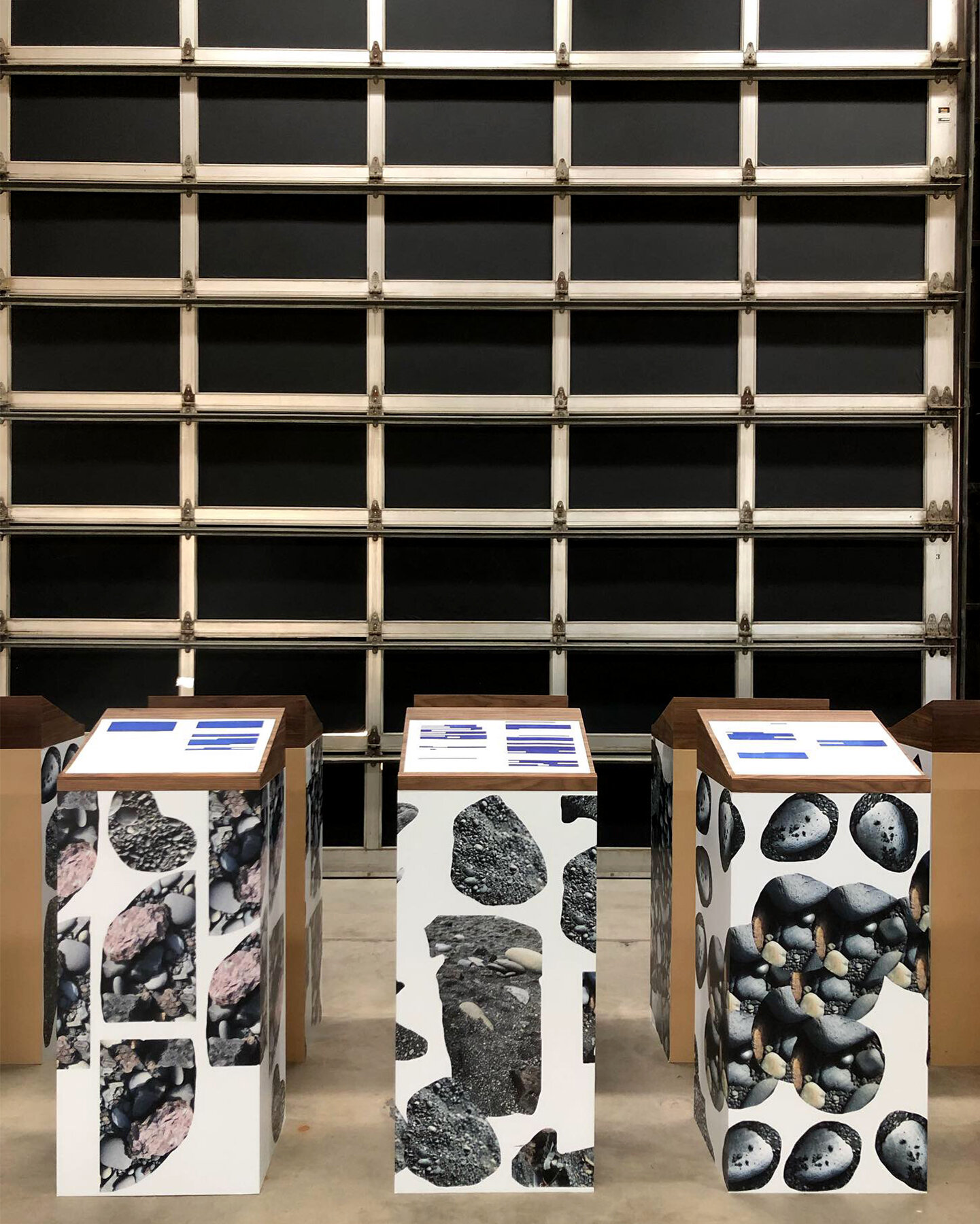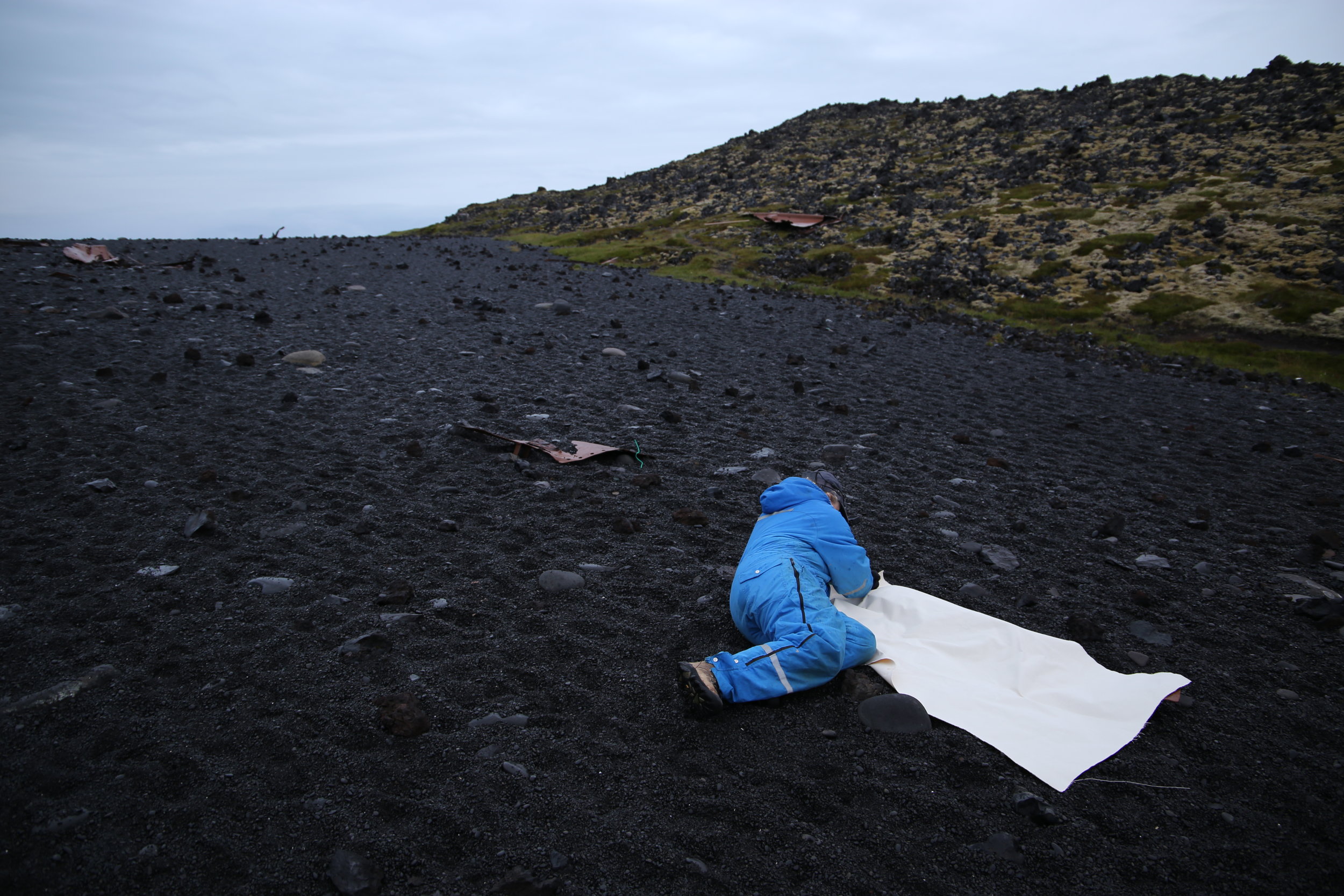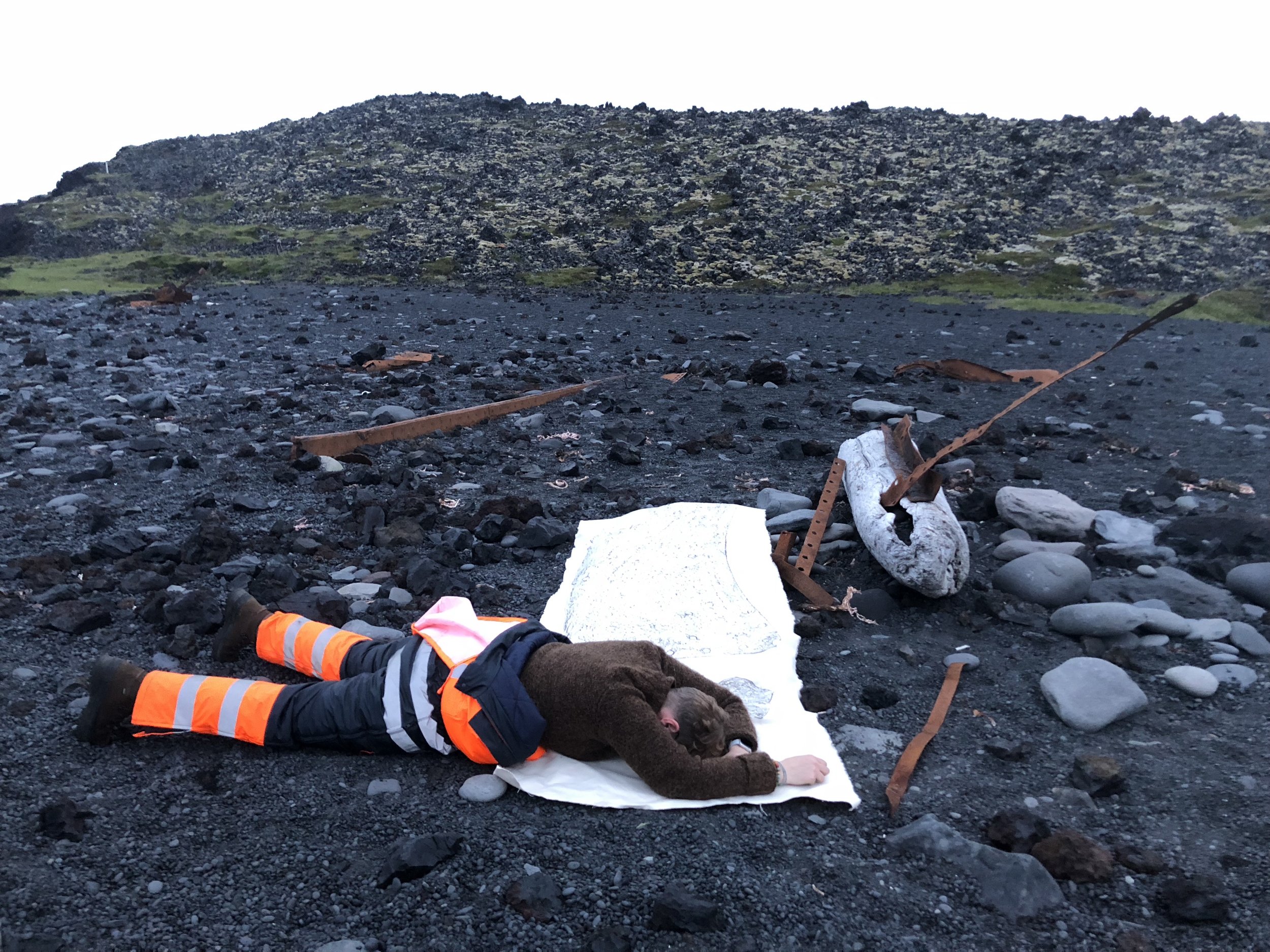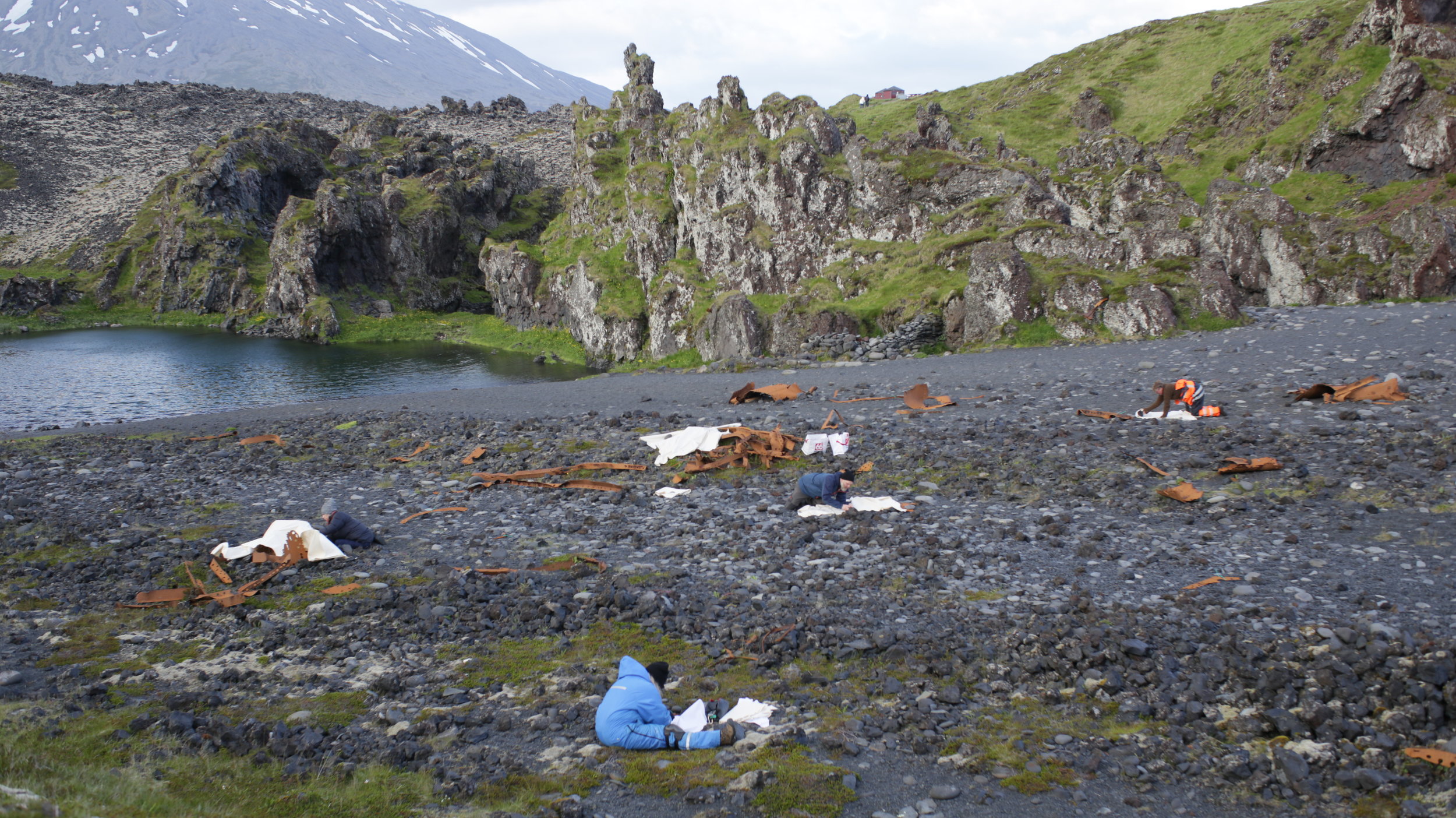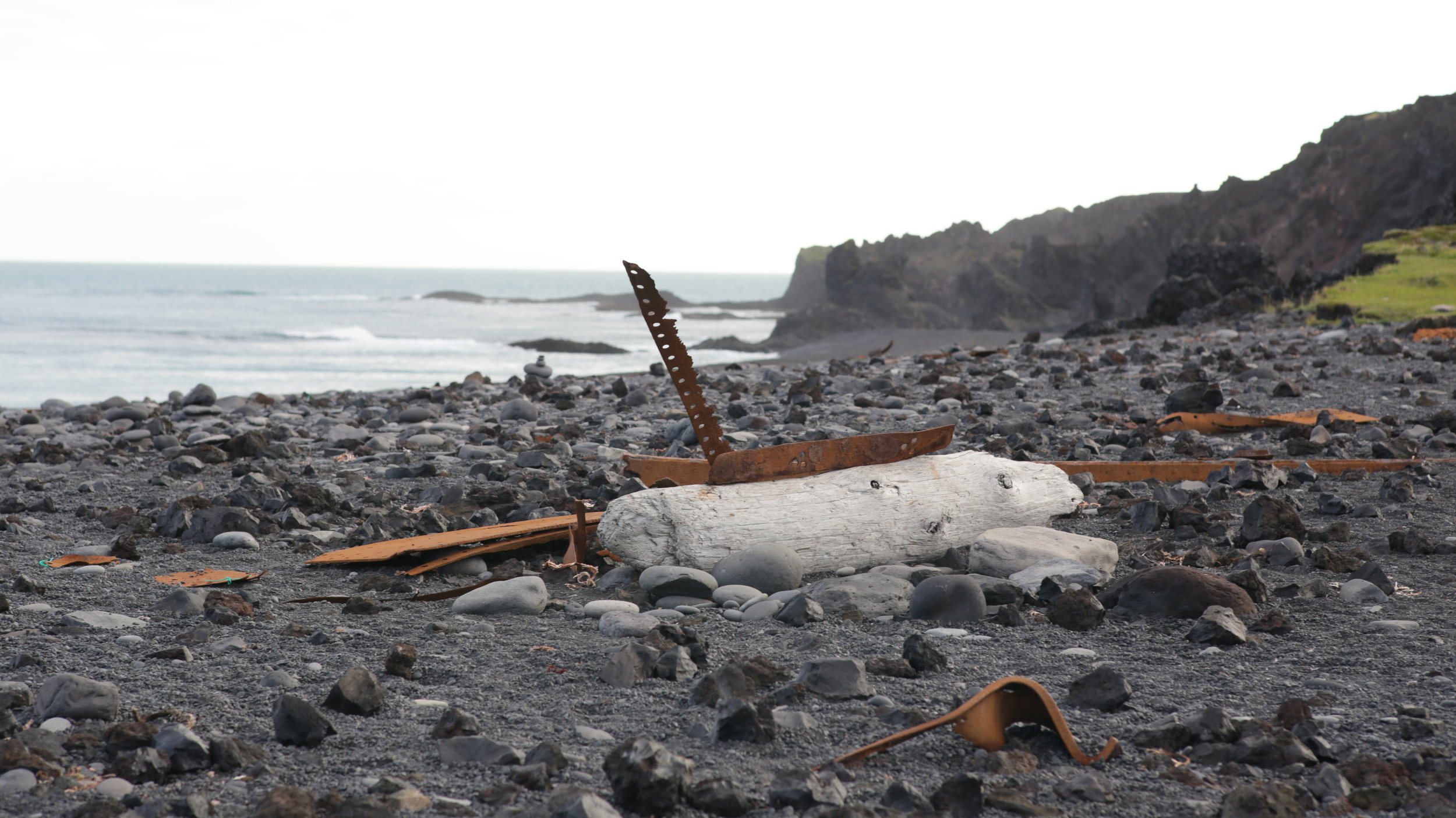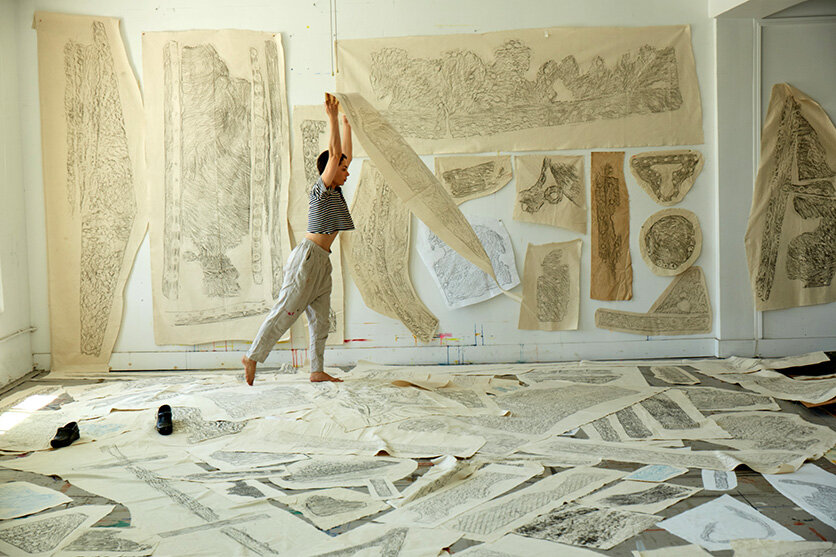moca tucson, fall 2019
The fantastical reconstruction of the epine gy7
chapter one: the fragments
When my boyfriend C. died suddenly in 2009, I couldn’t make any sense of it. I felt that if I recorded everything, I could understand it later. So I turned my camera on myself, on others, on people I thought might have answers. I took his ashes to the places I thought he’d want to be, including a beach in Iceland we’d visited together. Within a year there were more than 50 tapes. As I transcribed each one by hand, I was simultaneously sorting through the evidence, looking for meaning.
Ten years later I found myself back on Iceland’s Snaefellsnes peninsula, on the very black-pebbled shore where I left some of C.’s remains a decade before. But this time I was there with friends, to make canvas rubbings of the rusted rubble of a British fishing trawler called the Epine GY7 which had smashed onto those rocks in 1948. Over five summer nights, fueled by box wine and coffee, we documented the strange landscape of sculptural, oxidized wreckage with the intention of putting it all back together somehow. Upon an invitation from MoCA Tucson, the ship’s detritus and the debris of my grief came together in a sort of conversation—in an attempt at re-membering. The fragmentary quality of the ad-hoc memorial reminded me of the abstract canvases that become stacks, piles, and arrangements in my studio—which are, in turn, akin to the artifacts of time and loss found within the transcribed tapes.
The exhibition consisted of five Fantastical Reconstructions of the Epine GY7; in paper, burnt wood, cut and painted canvas, video and sound. All of it a part of my ongoing process of harvesting and collating pieces that make new wholes; an effort not only of traversing and collecting across a landscape of missing pieces and unavailable insights, but a determination to make something in and of those spaces as an act of living.
The Fantastical Reconstruction of The Epine GY7
In the middle of a winter night in 1948, in the icy, turbulent waters off the western coast of Iceland, a British fishing trawler called the Epine GY7 smashed into rocks. All that’s left of this event is a strange landscape of twisted metal figures embedded in a black-pebbled beach near Snaefellsness Glacier. Unrecognizable as the ship it once was, and left to rust for the past 70 years, these sculptural, oxidized remains create a strikingly enigmatic memorial.
Like the metal strewn on the beach, my studio overflows with stacks, piles and arrangements of abstract cut shapes of painted canvas — a different kind of wreckage. My process is one of assembling and reassembling these fragments of evidence into large-scale configurations that posit new possibilities, forms, and understandings.
I’ve been to Dritvik beach many times. Once, with an ex-boyfriend on a road trip with our friends Hildur and Joi. And then again, about a year later, to scatter that boyfriend’s ashes after he died in a car accident. Each time, I’ve felt compelled to gather the pieces somehow, or make a record of them, and to translate them into a new form: what meaning can I make from this evidence?
Most recently, I went back to Dritvik beach with a small group of loyal and intrepid friends. Over the course of five summer nights, fueled by boxed wine and thermoses of coffee, we made rubbings on canvas of every piece of the rusted remains of the Epine GY7.
When my boyfriend died, I couldn’t make sense of it. I felt that if I just recorded it, gathered the evidence, I could make sense of it later. After a year of documenting — turning my camera on myself, on others, on people I thought might have answers — I had accumulated over 50 tapes. I began to sift through them; I transcribed each one by hand. That document is the catalog of this show.
This project is not an attempt to recreate history, but rather to propose a new monument, a monument of a monument. Not to report but to transform.
making of...
Snaefellsness, Iceland



























